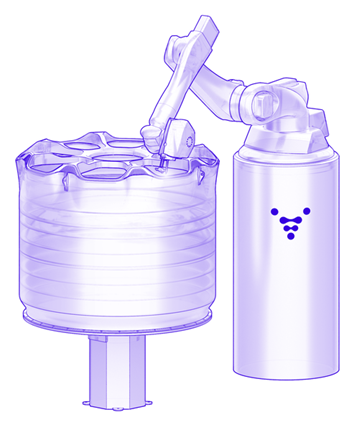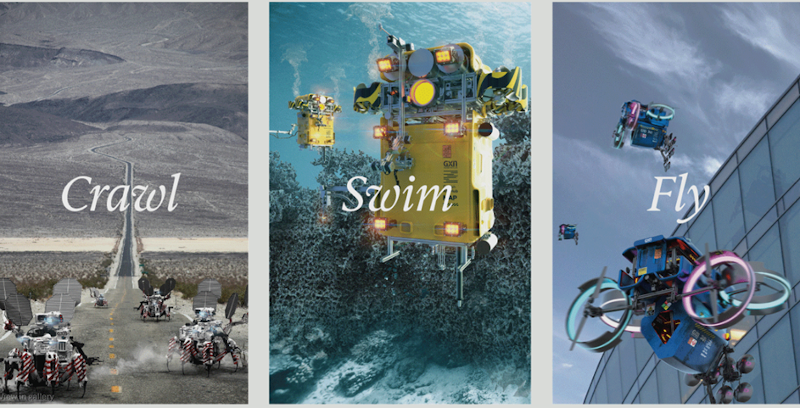
Charles R. Goulding and Ryan Donley consider how 3D printing might help us build imaginative new worlds.
Those immersed in 3D printing know that with improved printers, materials and software the creative opportunities are boundless. One approach to further enhancing creative application is to envision new 3D printing worlds. One of the most well-known creators of new worlds to stir the imagination was Walt Disney. We enjoy Magic Kingdom, Animal Kingdom and EPCOT. Jules Verne and Aquaman engage us with undersea world adventures.
Thinking about new worlds is the province of science fiction writers. N.K. Jemisin is a leading contemporary science fiction writer. Among Jemisin’s best-selling books are The Stone Sky, The Obelisk Gate, The Inheritance Trilogy, The Fifth Season, and The Shadowed Sun.
Jemisin has a new multi-session masterclass that explains how to create new fantasy and science fiction worlds. The class describes how to think through new macro worlds and micro worlds. Basic belief sets can be challenged. Rather than 4 seasons, an alternative world can have any number of seasons, say 30 in her example.
To practice her craft, Jemisin will examine ancient civilizations and identify how they addressed life’s issues. She provides an example of how earthquake-prone civilizations used different building concepts and technology to insulate themselves from seismic shocks.
The 3D printing community is entering exciting new worlds of construction, bioprinting and space. Our creative community members are going to develop new 3D printing solutions that we can only begin to imagine.
Walt Disney

Disney’s scope of creative worlds covers a wide landscape of fantasy that reaches numerous audiences. The umbrella of Disney worlds is fascinating, encompassing Star Wars, the Marvel Universe, Pixar Films, and the Disney Princesses to name a few.
The rise of 3D printing and fan creativity has allowed for unique homemade 3D printed Disney products and accessories to pay homage to the expansive Disney universe. This includes kids being involved in new 3D printing technologies as Toybox, a 3D printer geared for children, offers open-source design and development to 3D print toys with customization creating open-ended opportunities in young fans’ minds.
Relativity Space

Relativity Space is an aerospace company that is currently in the process of 3D printing rockets. The company sees the potential in 3D printing and has stated the additive manufacturing process has helped them achieve what many have thought was not possible in aerospace. So far, the number of parts in a rocket has been significantly reduced from 60,000+ to just 730 parts which, additionally, cut lead times and optimized the overall process.
The ambitions of Relativity Space span ever higher as they aim to fuse 3D printing, artificial intelligence, and autonomous robotics to eventually send raw materials and 3D printers to Mars with hopes of 3D printed rockets returning back. The possibilities are endless if successful and will bring a new frontier of creativity to the 3D printing landscape.
GXN Innovation
GXN Innovation is a subsidiary of 3XN Architects, a renowned Danish architecture firm. GXN is in the process of converging technologies in 3D printing to enable new approaches to construction.
The pressing infrastructure challenges have led GXN to develop several prototypes of autonomous 3D printing robots to address these challenges. The concepts are for three different scenarios which include Crawl, Swim, and Fly, each developed for infrastructure repair in the respective names: Crawl for roads, highways, etc.; Swim for underwater repair as a result of erosion; and Fly for addressing deteriorating high rise buildings and to combat energy loss and material degradation. GXN is attempting to push the limits of 3D printing with ambitions that will push the boundaries of creativity and potentially create unique new worlds of additive manufacturing.

Federal tax incentives, such as the Research and Development (R&D) Tax Credit, are available for companies that engage in 3D printing activities.
The Research and Development Tax Credit
Whether it’s used for creating and testing prototypes or for final production, 3D printing is a great indicator that R&D Credit eligible activities are taking place. Companies implementing this technology at any point should consider taking advantage of R&D Tax Credits.
Enacted in 1981, the now permanent Federal Research and Development Tax Credit allows a credit that typically ranges from 4%-7% of eligible spending for new and improved products and processes. Qualified research must meet the following four criteria:
- Must be technological in nature
- Must be a component of the taxpayer’s business
- Must represent R&D in the experimental sense and generally includes all such costs related to the development or improvement of a product or process
- Must eliminate uncertainty through a process of experimentation that considers one or more alternatives
Eligible costs include US employee wages, cost of supplies consumed in the R&D process, cost of pre-production testing, US contract research expenses, and certain costs associated with developing a patent.
On December 18, 2015, President Obama signed the PATH Act, making the R&D Tax Credit permanent. Beginning in 2016, the R&D credit has been used to offset Alternative Minimum Tax (AMT) for companies with revenue below $50MM and, startup businesses can obtain up to $250,000 per year in payroll tax cash rebates.
Conclusion
Thinking about tomorrow’s 3D works is exciting. To get our creative juices flowing we can look to our forefathers’ accomplishments and apply Jemisin’s new world creation learning processes.
